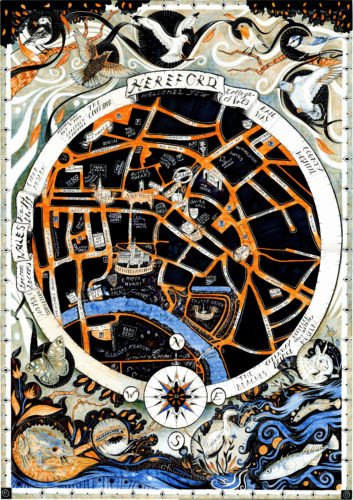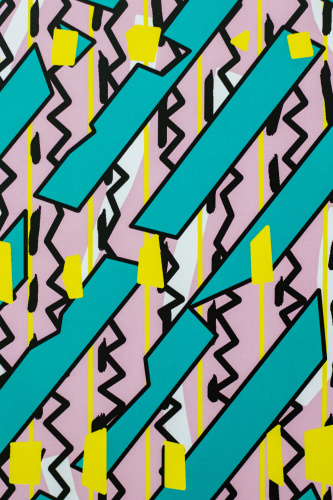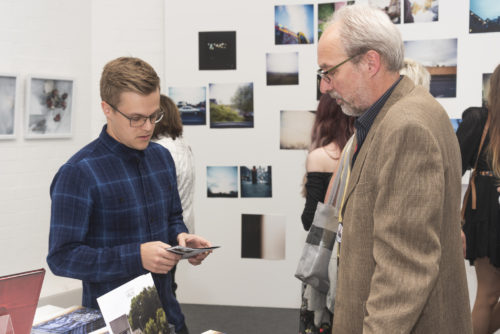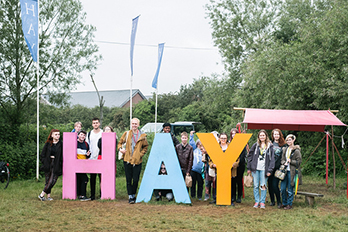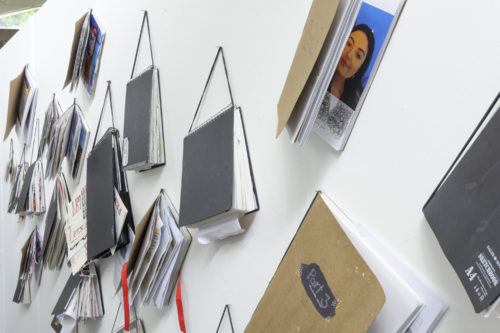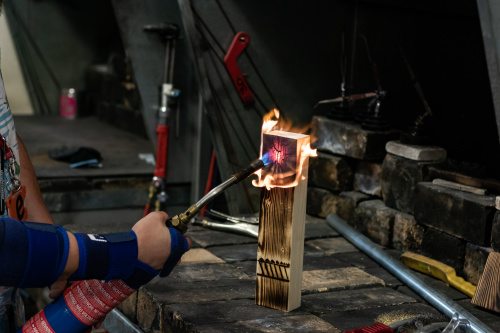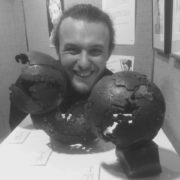Ypres 2016 Master: Jacob Haggarty
Published on 25.05.16
Regular readers of our blog will have already seen a number of blogs written about Ypres 2016. As a course we are heavily involved; I am working with BABA curating the Transition exhibition, we have students and graduates selected to participate in the exhibition, we’ve forged poppies for the cenotaph, many of our students will
Categories
Regular readers of our blog will have already seen a number of blogs written about Ypres 2016. As a course we are heavily involved; I am working with BABA curating the Transition exhibition, we have students and graduates selected to participate in the exhibition, we’ve forged poppies for the cenotaph, many of our students will be travelling to the event to work as crew and forge stewards and now I am delighted to announce that we have a new connection with the event – Jacob Haggarty, one of our second year students, has been selected to be a Master at the event. It’s such an incredible achievement and accolade. Let me tell you more….
Excerpt from Beating Swords Into Ploughshares article by Fran Mackereth:
Blacksmithing has the distinction of being one of the few crafts that in World War One played a vital role in sustaining the war efforts of all combatant nations. Today, blacksmithing also has a well-founded reputation for being highly collaborative and international in its outlook. It is against this backdrop that in September over 150 blacksmiths from around the world will congregate in the Grote Markt of Ypres, the Flanders town that is practically synonymous with the horrors of the First World War, to bring Ypres 2016 to life.
Ypres 2016 is a major international blacksmithing event that has been master-minded by a group of blacksmiths from the British Artist Blacksmiths Association (BABA), working in close collaboration with the Belgian Guild of Blacksmiths (ASG). It forms part of Flanders’ centenary commemorations of the Great War, and its primary focus is the creation of a contemporary cenotaph in memory of all those involved in or affected by that conflict. The finished memorial will be sited adjacent to the German war cemetery at Langemark-Poelkapelle and will be officially inaugurated on Remembrance Day 2016.
The centrepiece of this cenotaph for the 21st century will be a striking yet simple 7m tall metal slab of CorTen weathering steel, featuring the negative and positive image of a single Flanders poppy: the negative representing the fallen and their loved ones, the positive representing the hope of a better future that sprang from their sacrifice. At its base will be ‘planted’ a field of 2016 handcrafted steel poppies, which will have been handcrafted by blacksmiths from around the world prior to the event.
The finished cenotaph will be framed by 25 railing panels arranged in the zig-zag pattern that characterised the layout of the trenches. Each one designed by a renowned international Master Blacksmith, they will depict the designers’ personal responses to the First World War and will be forged at the event by teams of volunteer blacksmiths, all doing what they do best: working together in a spirit of friendship to create something beautiful and meaningful in metal.
So last weekend the Ypres Core Committee met. They had already invited twelve master blacksmiths from across the world to design a panel, with the other thirteen panels due to be selected from an open competition. There were over a hundred submissions from across the globe that needed to be whittled down to thirteen, and I am delighted to say that Jacob’s panel design was one of the ones selected. So Jacob is a selected master. Wow, what an achievement!
This morning he had a new Facebook post that read,
I can now officially say that I am a ‘selected master’ for one of the biggest forging events in recent history, Ypres 2016. The event will take place at Ypres in September and takes place from the 1st to the 6th.
It’s astonishing and hugely exciting to me that I’ve managed to achieve something as significant as this as such an early stage and I’m very grateful for the opportunity to prove to myself and my community everything I’ve learned and just how much I have to offer. Safe, to say I’m bricking myself, but I know I’ll have all the support I could possibly hope for.
Describing his panel design, Jacob writes,
“For my panel design, I wanted to try to do something different. In 1914 the first bombs fell on Ypres, and the city had put in place plans to rebuild from as early as 1915. Today the city of Ypres, or Ieper as it’s known in Flemish, has been carefully reconstructed to the way it was pre-war. This amazing recovery is an achievement that I wanted to honour in the design for the panel, which depicts a birds-eye-view image of Ypres in 1918, constructed from multiple plates of flat steel section. The intention behind this is that the plates of steel are representative of the bricks used to reconstruct the remains of the city, and carry strong connotations of rebuilding and recovering when coupled with the aerial image of Ypres 1918, which was almost completely levelled by bombing and skirmishing. In this sense, the rebuilding process is made the feature of the design, but the sombre imagery of the damage done by the war is paid respect to as well.
The image will be put into the steel plates by using various chisel marks, ball punches, and heavy to light fullering to represent the scarred terrain, craters, and churned earth of war-time Ypres. The same design will be featured on both sides, meaning that two copies of each plate will need to be made. Each brick will be made of 40mm or 30mm by 10mm flat stock, and will have a 10mm hole drilled through the centre, which is then counter sunk to approximately 15mm. This allows for a rivet to sit flush with the surface of the plate and so can be disguised effectively as the detail of the map section the plate corresponds to.
The plates are connected to the frame by lengths of 200mm round or octagonal section with slit and drifted 10mm holes at regular intervals, to allow for riveting the plate on.”
So, now the work begins for Jacob. He’ll need to make samples, tooling, test connections, generate scale drawings and prepare to lead a team of six smiths from across the world at the event, where the panel will be made. And then after the event, his panel will form part of the cenotaph for at least the next millennia. What an adventure, how exciting!
Further information is available on the project website – www.Ypres2016.com
Twitter – @Ypres2016
Facebook – https://www.facebook.com/poppycenotaph/?ref=ts&fref=ts
Del


